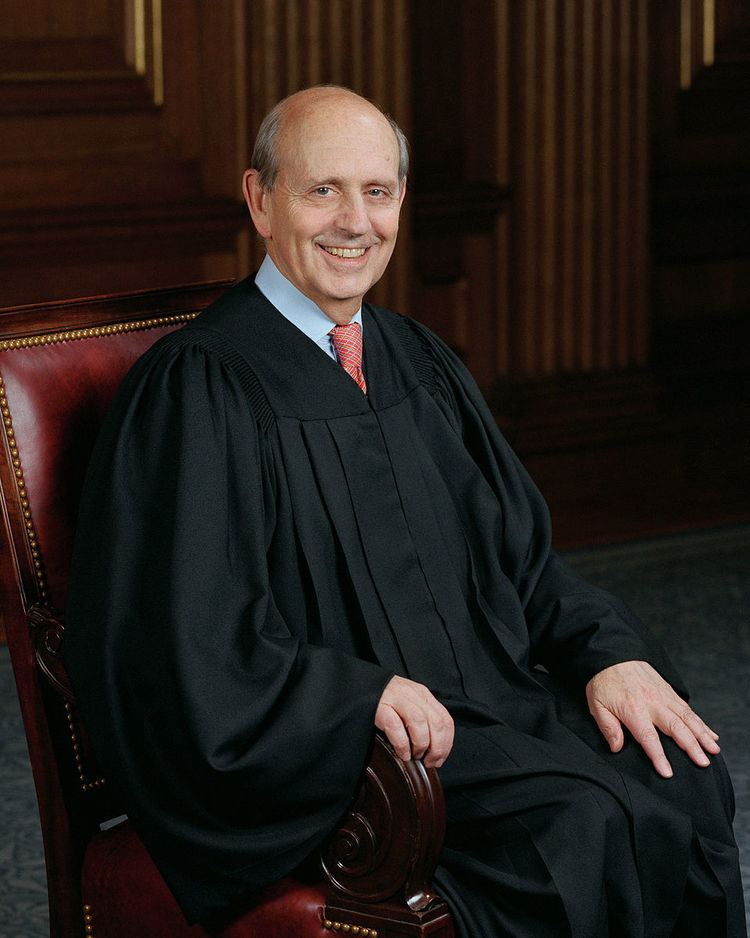 | ||
The Thurmond rule, in US politics, posits that at some point in a presidential election year, the US Senate will not confirm the president's nominees to the federal judiciary except under certain circumstances. The practice is not an actual "rule" and has not been followed in the past, with presidents continuing to appoint and the Senate continuing to confirm judicial nominees during election years.
Contents
Although described by experts as a myth, the "rule" has been inconsistently invoked by senators from both political parties, usually when politically advantageous to do so.
Description
The Thurmond rule "has its origins in June 1968, when Senator Strom Thurmond, Republican of South Carolina, blocked President Lyndon B. Johnson's appointment of Justice Abe Fortas as chief justice." The "rule" has been variously described:
Nonapplication
The "rule" is not observed consistently by the Senate. A 2012 study by judicial expert Russell Wheeler of the Brookings Institution showed that in each of the four previous presidential election years (1996, 2000, 2004, and 2008), the pace of federal judicial nominations and confirmations slowed but did not stop. Wheeler describes the "rule" as a myth, noting that while it becomes more difficult for a president to push through his nominees in his last year of office, nominations and confirmations have been routinely made in presidential election years. Similarly, a 2008 Congressional Research Service report could not identify any "consistently observed date or point in time after which the Senate ceased processing district and circuit nominations during the presidential election years from 1980 to 2004." For instance, in December 1980, Stephen Breyer (who later became an Associate Justice of the Supreme Court of the United States) was confirmed as a judge of the United States Court of Appeals for the First Circuit. Additionally, in 1984, when Thurmond was chair of the Senate Judiciary Committee, judicial confirmations occurred that fall.
Politifact has rated the claim that "there comes a point in the last year of the president, especially in their second term, where [the president] stop[s] nominating" both Supreme Court justices and Court of Appeals judges as "false."
Political invocation
Sarah A. Binder, a senior fellow at the Brookings Institution, notes that although studies have shown "that there is no such formal 'rule,'" that "hasn't stopped senators from either party from talking about the practice as a rule or often even as a doctrine. Because both parties have, over time, valued their ability to block the president's judicial nominees, keeping alive the Thurmond Rule has proved convenient for both parties at different times." Glenn Kessler and Aaron Blake of the Washington Post note that senators of both political parties—such as Mitch McConnell and Pat Leahy—frequently flip-flop on the issue of judicial nominations in presidential election years, alternately invoking the Thurmond Rule and denying its validity, depending on which party controls the Senate and the White House. For example, in 2004, when George W. Bush was president, Republican Senator Orrin Hatch of Utah dismissed the rule, saying "Strom Thurmond unilaterally on his own ... when he was chairman could say whatever he wanted to, but that didn't bind the whole committee, and it doesn't bind me." Conversely, in 2008, Democratic Senator Dianne Feinstein of California had invoked the "rule" in saying that the Senate should not act on any judicial appointments made by Bush in his last year in office, and in response, a Bush White House spokeswoman said that the "only thing clear about the so-called 'Thurmond Rule' is that there is no such defined rule." Kessler concludes that "both parties can be viewed as hypocritical, situational and prone to flip-flopping, depending on which party holds the presidency and/or the Senate."
2016 controversy
The Thurmond Rule was raised again in public discourse in February 2016 after the death of Supreme Court Justice Antonin Scalia. President Barack Obama said he would nominate a candidate for the open seat, but with just under one year remaining in Barack Obama's second term, Republicans claimed the Thurmond Rule for categorically refusing to vote on any Obama nominee.
